08 Jun 2015
The Top Three Reasons Marijuana Should Be Banned
Recreational marijuana is a buzzword these days, and for good reason. As voters are given the choice, many are opting to make this drug legal for adults to use however they see fit. The tide of public opinion may be shifting and the benefits of legalization of marijuana for recreational use highly touted, but marijuana remains a federally illegal, mind-altering substance.
Top Three Reasons Marijuana Should Be Banned
Before you make up your own mind in the pros and cons of legalization of marijuana debate, make sure you are familiar with the major reasons why this drug needs to remain illegal.
1. Marijuana Is Addictive
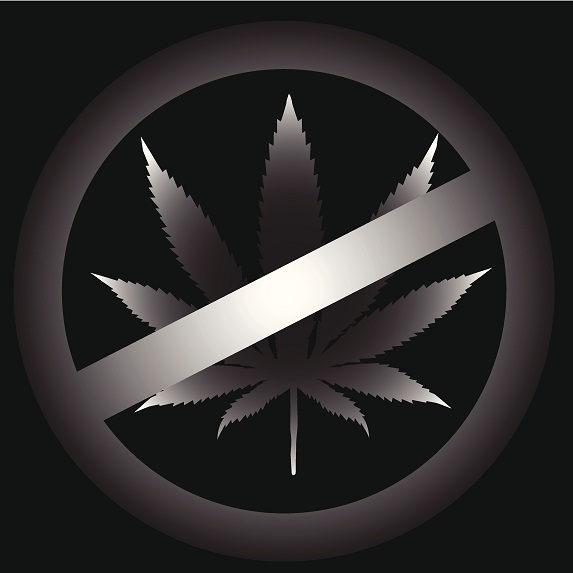 One of the biggest misconceptions about cannabis, or marijuana, is that you can’t get addicted to it. This stems from the fact that it is much less addictive than substances like heroin, meth or crack. This does not mean, however, that you cannot develop a habit when smoking pot. Thousands of people every year seek treatment for marijuana addiction, and it is a real and serious problem.
One of the biggest misconceptions about cannabis, or marijuana, is that you can’t get addicted to it. This stems from the fact that it is much less addictive than substances like heroin, meth or crack. This does not mean, however, that you cannot develop a habit when smoking pot. Thousands of people every year seek treatment for marijuana addiction, and it is a real and serious problem.
It’s easy to be misled by the lax attitude toward marijuana. A lot of people use it recreationally and are able to keep it that way. Maybe you smoke at a party one time and then get some to use at home by yourself. You find that it’s nice to use when you want to relax or party with a few friends. But before you know it, that partying becomes addiction and you can’t relax without your drug of choice.
2. Young People Are Harmed By Marijuana
But, you say, marijuana is being made legal for adults only, not for teens. Of course, there’s no such thing as underage drinking, right? Alcohol is supposed to be for adults only, but around 10 percent of drinking in this country is done by people under the age of 21. Based on alcohol’s example, we can expect that the same will happen with legal pot. Marijuana is particularly bad for young people with brains that are still in development. Studies have shown that teens who smoke pot regularly have lower IQs than their peers. They perform worse academically, miss more days of school and are less likely to participate in extracurricular activities.
3. Marijuana Causes Accidents
Another lesson that alcohol teaches us is that although driving under the influence is outlawed, too many people do it. The result is that thousands of people are injured or killed every year by drunk drivers. With legal marijuana we will be adding thousands of more to that list every year. Intoxicated driving is the same no matter what the substance is. A high driver is like a drunk driver and liable to cause accidents.
The debate about making this drug legal will continue and more states are likely to vote for it, but the cons for recreational marijuana are just too many and too great. There is no need for legal drugs when the safety and well-being of all Americans is at stake.
Get Help Now – Learn More About Marijuana Addiction Treatment
01 Jun 2015
The Dangers Of Mothball Abuse
Substance use and abuse among teens and young adults often includes the huffing of inhalants. This is a practice that adults might engage in as well, but it is more common in young people because of access. Many household chemicals can be used for huffing, which is the practice of inhaling fumes to get high. Young people turn to huffing because it is an easy high. One substance in your home you might not suspect could be used in this way may be in your closet. Mothballs can be used to get high and, as silly as it sounds, the dangers are not insignificant.
What Is Mothball Abuse?
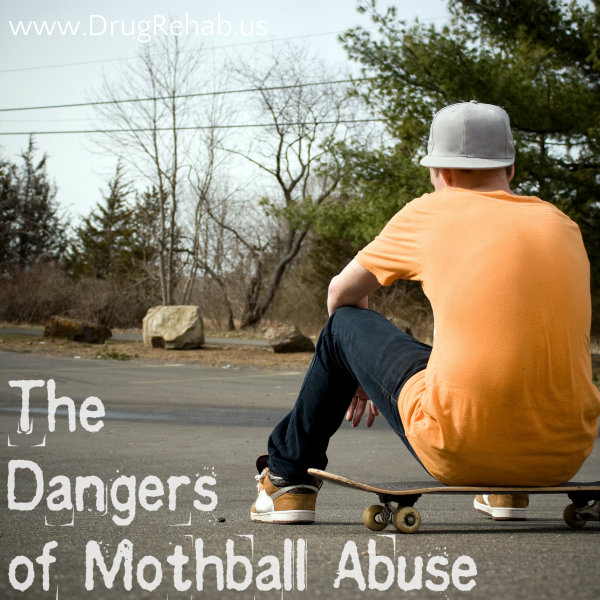 Huffing means capturing and inhaling the fumes of certain chemicals in pursuit of a high. Many products and chemicals can be used for this purpose, ranging from Freon in air conditioning units to the gases in a can of whipped cream. People who abuse mothballs typically put them in a paper bag and breathe into it for several minutes. Mothballs are traditionally made with a volatile chemical called naphthalene, but newer products use a dichlorobenzene instead, as it is less flammable. Either chemical can be huffed for a high.
Huffing means capturing and inhaling the fumes of certain chemicals in pursuit of a high. Many products and chemicals can be used for this purpose, ranging from Freon in air conditioning units to the gases in a can of whipped cream. People who abuse mothballs typically put them in a paper bag and breathe into it for several minutes. Mothballs are traditionally made with a volatile chemical called naphthalene, but newer products use a dichlorobenzene instead, as it is less flammable. Either chemical can be huffed for a high.
Mothballs And Addiction
Mothball abuse may not sound as serious as something like cocaine abuse, but inhalant abuse can be dangerous and fatal. Users can even get addicted to the high that comes with huffing. Research on addiction to mothballs, naphthalene or dichlorobenzene is limited, but we do know that inhalant use can lead to addiction. Like any drug of abuse, inhalants cause the user to get high or experience a pleasurable sensation. With time and frequent use, the brain changes in response to this high, and quitting becomes more and more difficult. Eventually the user is hooked.
Is Napthalene Addiction Dangerous For Health?
Becoming addicted to naphthalene is extremely dangerous. Even if someone doesn’t get addicted, just using this substance recreationally is risky. Both naphthalene and dichlorobenzene are harmful, toxic substances. This is why moths stay away from mothballs. When someone inhales the fumes from mothballs, he will lose coordination, develop slurred speech, become weak in the limbs, get headaches, feel nauseated and vomit. Some users may even get a scaly skin rash.
These are short-term side effects of getting high on mothballs. The long-term health effects of inhaling these substances include kidney and liver failure, anemia, convulsions, seizures and coma. Death is also possible when huffing, no matter what substance is being used. Huffing can even be fatal on the first try because the user is cutting off oxygen supply when inhaling another substance.
The dangers of abusing mothballs are numerous and serious. If you have a teenager, make sure he knows that this habit, which may seem like harmless fun, is actually quite dangerous. If you use mothballs, make sure they are locked away to prevent access. Huffing is common among teens and an issue of which all parents should be aware.
Concerned Your Teen Is Abusing Drugs?
Call An Elements Behavioral Health Counselor Now!
16 Apr 2015
Yes, People Really Do Get High On Mothballs
It sounds ridiculous, but it’s true: there is such a thing as mothball abuse. It’s mostly abused by teens, which are at the right age for trying stupid things. As silly as it seems to be sniffing the fumes coming from mothballs, the risks and the dangers are real and serious.
Teens that engage in this behavior are at risk for some pretty worrying health problems. If you have a teenager at home and mothballs in the closet, bring up the issue and make sure the consequences of abusing this household product are serious.
The Mothball High
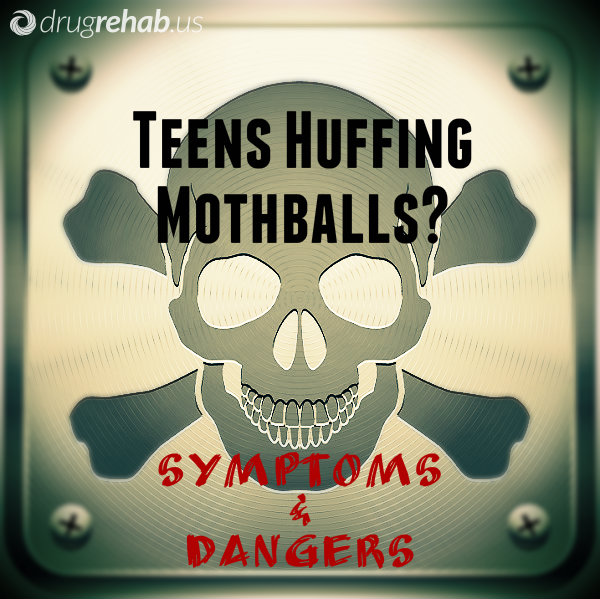 Teens are famous for coming up with new and inventive ways to get high. These strategies typically involve some household product because access is easy. Huffing is a common way for teens to get high, and most parents don’t even think about it. Huffing refers to the practice of inhaling fumes from a household product in order to get high. The list of inhalants used is long and includes paint, nail polish remover, hairspray, scented markers, correction fluid and even mothballs.
Teens are famous for coming up with new and inventive ways to get high. These strategies typically involve some household product because access is easy. Huffing is a common way for teens to get high, and most parents don’t even think about it. Huffing refers to the practice of inhaling fumes from a household product in order to get high. The list of inhalants used is long and includes paint, nail polish remover, hairspray, scented markers, correction fluid and even mothballs.
Mothballs are solid balls that give off an odor that deters moths. They protect your clothes from the insect. The odor comes from a substance in the mothball that turns from a solid into a gas that can be inhaled. Teens sniff mothballs like a drug to get high. The substance that gives them this high is either naphthalene or dichlorobenzene. Older mothballs tend to contain the former, while newer products have the latter. Both can get you high and are harmful to inhale.
Is Napthalene Addiction Dangerous For Health?
Huffing mothballs is dangerous. Most teens won’t do it often enough to get addicted, but addiction is possible. What is more likely is that teens inhaling the fumes will experience health problems.
Symptoms Of Inhaling Mothballs
The most common and immediate symptoms of inhaling mothballs include the following:
- lightheadedness and dizziness
- nausea
- vomiting
- stomach pains
- headaches
- eye and airway irritation
- slurred speech
- loss of coordination
- mental impairment
- weakness in the limbs
- scaly skin rash
Long-term Consequences Of Mothball Abuse
There are also some very serious long-term consequences of mothball abuse. Teens who huff mothballs several times put themselves at risk for excessive:
- weight loss
- anemia
- liver failure
- kidney failure
- and even seizures and coma
The effects of abusing mothballs with naphthalene are similar to those with dichlorobenzene. Dichlorobenzene is less toxic than naphthalene, which is why newer mothballs are made with it, but it can still cause the same symptoms and the same lasting damage to the body.
Talk To Your Teen About Mothball Huffing…NOW!
Mothballs made the news several years ago when teenagers in France were hospitalized for huffing them. The twin sisters were seriously impacted by their drug habit and one of the two needed a full six months to recover.
While cases like these bring exposure to a dangerous practice like mothball huffing, the story disappears before long and people forget.
Be aware that your teen might experiment with mothballs. Talk to your teen about the dangers and help him understand the risk of engaging in this serious type of drug abuse.
Club and party drugs are often assumed to be safe, but the truth is they can be just as dangerous, addictive and fatal as any other drug. Ecstasy has long been a popular club drug for the euphoric high and the sense of love and belonging that it gives the user. Ecstasy has also caused a number of club-goers to get sick, become drug addicts and even to die. K
now the truth about this party drug before you make a choice to try it. Whether it’s called ecstasy, Molly or MDMA, this drug is dangerous.
Effects Of Ecstasy
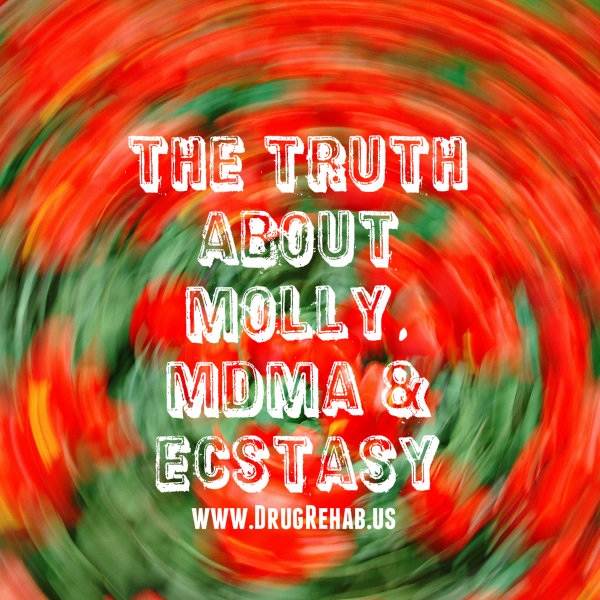 Ecstasy is popular as a party drug because of how it affects mood. Users of the drug report feeling a strong surge of euphoria and a sense of love and affection for other people. This combination makes it desirable at raves, clubs and parties. Ecstasy is able to alter mood because it changes levels of chemicals in the brain. These are dopamine, serotonin and norepinephrine and they are involved in the regulation of mood.
Ecstasy is popular as a party drug because of how it affects mood. Users of the drug report feeling a strong surge of euphoria and a sense of love and affection for other people. This combination makes it desirable at raves, clubs and parties. Ecstasy is able to alter mood because it changes levels of chemicals in the brain. These are dopamine, serotonin and norepinephrine and they are involved in the regulation of mood.
While changing these chemicals in your brain may make you feel happy and loving, the effects can also be negative. Many people experience negative mood changes with ecstasy, including aggression, paranoia, depression and anger. You may also experience sudden swings between feelings of euphoria and happiness and the more negative emotions and moods.
Ecstasy’s Dangerous Side Effects
In addition to the mood swings caused by ecstasy, there are some frightening side effects you can experience when using this drug. Side effects related to mood, including irritability, depression and anxiety, can last for a week or more after you use the drug. Physical effects are also likely and include extreme thirst, dehydration, and decreased libido, lack of appetite, restlessness, trouble sleeping and nausea.
Although not as addictive as some other drugs, ecstasy use can lead to addiction. If you become addicted to this supposedly harmless party drug, you risk being always in recovery for the rest of your life. And while drug and alcohol treatment success is possible, you can never fully escape the chronic illness of addiction.
The Lie About Molly And MDMA
For MDMA and Molly, drug abuse may seem perfectly safe. Clever drug dealers try to sell these products by claiming they are different than ecstasy. They claim that Molly is pure MDMA and that ecstasy is MDMA with dangerous contaminants. The truth is that the three drugs are the same and that you can never know if you are getting a pure drug (which is still very dangerous) or one that has been contaminated with more dangerous substances. No illegal drug is safe, ever.
If you have been tempted to try a party drug, whether it was MDMA, Molly, Ecstasy or any other substance, you should understand the risks. When you learn the truth about these harmful party drugs, you will feel empowered to say no the next time someone offers you a “safe” party high.
What Is The Deadly New Designer Drug: “Smiles”? – Find Out More Now!
02 Apr 2015
Why Recreational Marijuana Should Stay Illegal
Should marijuana be legalized for recreational use? This is a question on the minds of many people these days. Voters have gone to the polls and, in a few states, are telling their governments that they want legal pot. Attitudes toward this mind-altering substance are changing and many people don’t believe it is harmful enough to be illegal. This attitude is dangerous, though. Marijuana is a drug that changes brain chemistry, alters mood, causes side effects and leads to addiction in at least a tenth of users. There are too many reasons for keeping this drug illegal.
Main Reasons Why Recreational Marijuana Should Stay Illegal
Marijuana Is Bad For Health
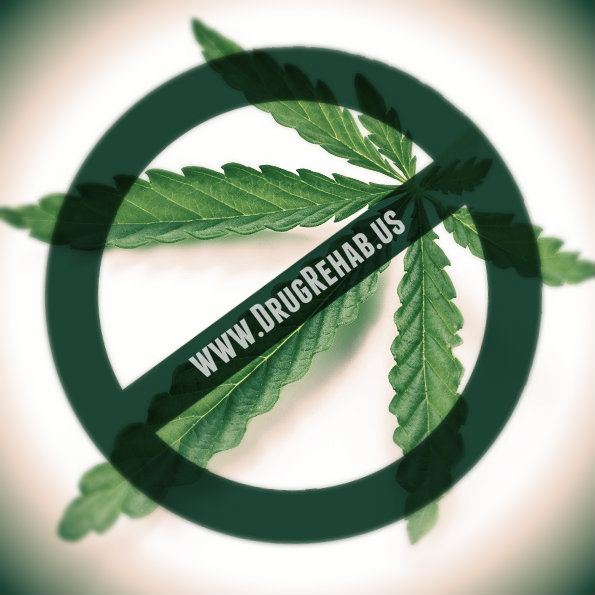 There is a lot of evidence that some of the compounds in the cannabis plant, which is where marijuana comes from, can help people with certain illnesses. But for healthy people, using marijuana causes a number of bad side effects and negative health consequences.
There is a lot of evidence that some of the compounds in the cannabis plant, which is where marijuana comes from, can help people with certain illnesses. But for healthy people, using marijuana causes a number of bad side effects and negative health consequences.
Short term marijuana effects include:
Sleepiness and depression, an increased heart rate (which can cause a heart attack, anxiety and panic), and delayed reaction times.
Long term marijuana effects include:
Over the long-term the drug suppresses the immune system, causes growth disorders, lack of motivation and lung damage, changes mood and personality and lowers libido.
Marijuana Is Addictive
One of the greatest misconceptions about this drug, and an important argument against legalization of marijuana is addiction. While not nearly as addictive as drugs like heroin or crack, marijuana is habit-forming and causes addiction in one out of nine users. Many people seeking professional treatment for addiction are hooked on marijuana. The problem is particularly real for young people. Addiction to marijuana is most likely to develop in users who started smoking as teenagers.
Marijuana Causes Accidents
Most people who use marijuana like the relaxing sensation that it imparts. The drug makes you feel drowsy, happy, relaxed and comfortable. The downside to these effects is the risk of having accidents. Marijuana messes with your coordination, reaction times and inhibitions. While high on pot, people make bad choices and have accidents that could have been prevented. If marijuana is legal, innocent people will become the victims of these accidents. Drinking and driving accidents already kill many people every day. Driving while high on pot will only add to the problem.
Marijuana Harms Young People
Teens and young adults are especially vulnerable to the negative effects of marijuana. They are more likely to become addicted to it. They are also at a greater risk of lasting mental damage from marijuana. Brains of teenagers are still developing, and using mind-altering substances can hamper that development. Teens using marijuana regularly experience lasting cognitive defects and memory deficits.
The pros and cons of recreational cannabis will continue to be debated in the public and voters will keep going to the polls to decide pot’s legal status. As the discussion carries on, we all need to remember the harm that marijuana causes and the lasting damage many users experience.
Read More What’s The Impact Of Recreational Marijuana Becoming Legal In Colorado?
05 Feb 2015
Can You Safely Use Recreational Marijuana?
Recreational marijuana is now legal for adults in Washington and Colorado. The citizens of those states spoke and voted for legalization. The votes signify shifting attitudes across the country. Many people do not believe that marijuana should be kept illegal. Proponents of legal marijuana say that it is less risky than cigarettes or alcohol and that the tax revenue can help state and local governments.
Does this mean that you can use marijuana safely?
Short-Term Effects Of Marijuana
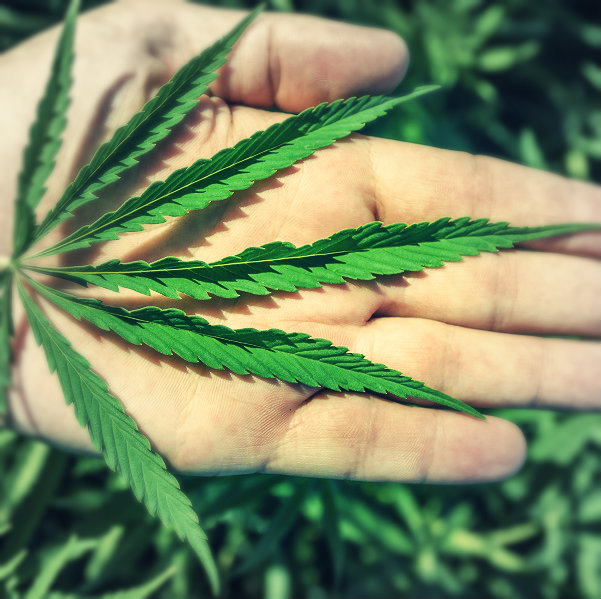 Before you decide whether or not you can safely use recreational marijuana, you should know the facts. When you smoke pot or consume the cannabis plant you are taking in a psychoactive compound called THC. This is the substance that is largely responsible for the high that accompanies pot smoking. THC acts on certain receptors in the brain to produce a number of effects: giddiness, lightheadedness, relaxation, introspection, a desire to eat, but also paranoia, irritability and disturbing thoughts.
Before you decide whether or not you can safely use recreational marijuana, you should know the facts. When you smoke pot or consume the cannabis plant you are taking in a psychoactive compound called THC. This is the substance that is largely responsible for the high that accompanies pot smoking. THC acts on certain receptors in the brain to produce a number of effects: giddiness, lightheadedness, relaxation, introspection, a desire to eat, but also paranoia, irritability and disturbing thoughts.
Using marijuana also results in an impairment of certain abilities. Your memory gets worse, as does your ability to focus and concentrate. It blunts your motor skills and your ability to operate machinery effectively. Driving a car is extremely dangerous when under the influence of marijuana.
Long-Term Effects Of Marijuana
The long-term impact of smoking pot is still being researched, but there is plenty of evidence that it can have some seriously negative effects. Most problematic is the impact on young people. If you start using marijuana as a teen you are at a much greater risk of getting addicted. You also face the risk of permanently damaging cognitive functions. Regular users who began smoking as teens see a drop of as much as eight IQ points into adulthood.
Even casual users of marijuana experience permanent changes in the brain. These include changes to the parts of the brain that govern motivation, addiction and emotion. And of course, there are health problems associated with smoking, which include respiratory illnesses and potentially the development of lung cancer with frequent and regular use.
Marijuana Is Addictive
Proponents of marijuana use will argue that the drug is not addictive, but research says otherwise. It is less addictive than nicotine, alcohol and heroin, but it is habit forming. In fact, nine percent of people who ever use the drug will become dependent on it. The risk is especially high for young people. For users who first started smoking as a teen, there is a much greater chance of getting hooked than for an adult using the drug for the first time.
Adults using pot run the risk of becoming addicted too. The greatest risk comes with using it regularly and frequently. Unlike harder drugs, addiction to pot is not sudden. It comes on more slowly, but can be just as devastating. 18 percent of people seeking drug addiction treatment in the U.S. are addicted to marijuana. Withdrawal symptoms that make it difficult to quit include insomnia, cravings, anxiety and irritability.
If you have been wondering about recreational marijuana and whether it can truly be safe for a responsible adult, make sure you get all the facts. No drug is ever safe. Marijuana may carry fewer risks than heroin or cocaine, but it can alter your brain, dull your motor skills, impair your memory, lead you to have an accident, lead to respiratory problems and cause you to become an addict. Are these risks worth the high? That is for you to decide.
29 Dec 2014
How Many People Use Medical Marijuana?
Medical marijuana is the term commonly used to describe the plant-based drug marijuana when consumed as a treatment under the direction of a physician. Despite the known effectiveness of the drug in limited medical contexts, many researchers and public health experts express a legitimate concern that medical marijuana use may contribute to increased marijuana-related harm in the larger population.
In a study published in September 2014 in the journal Drug and Alcohol Review, researchers from the U.S.-based Public Health Institute sought to estimate how many people in California, a state with a widely-developed medical marijuana program, consume marijuana/cannabis in a medical context.
Medical Marijuana – THC And CBD
Marijuana contains two prominent active ingredients, THC (tetrahydrocannabinol) and CBD (cannabidiol). THC is largely responsible for the mind-altering effects closely associated with marijuana/cannabis use. CBD does not have any substantial mind-altering impact. Both THC and CBD have potential usefulness in a medical context.
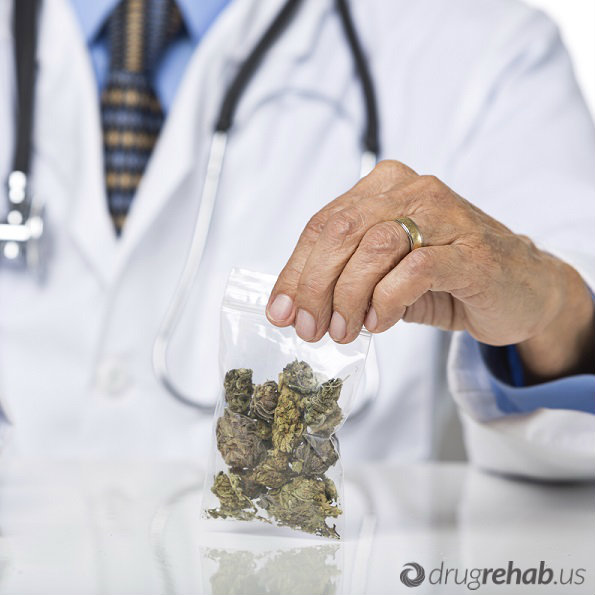 Scientifically supported medicinal properties of THC include nausea reduction and stimulation of appetite; other potential, less supported properties include the easing of inflammation and pain, as well as the reduction of muscle spasms.
Scientifically supported medicinal properties of THC include nausea reduction and stimulation of appetite; other potential, less supported properties include the easing of inflammation and pain, as well as the reduction of muscle spasms.
Scientifically supported medicinal properties of CBD include inflammation and pain relief, as well as seizure relief; the chemical may also help ease the severity of psychotic mental states.
Some medical marijuana growers sell products high in THC, while others sell low-THC products that rely on CBD for their effectiveness. However, without a thorough, case-by-case chemical analysis, no one can say how much of either chemical any given batch of marijuana/cannabis contains.
Among other things, this means that there is no such thing as “standard” dose of medical marijuana. For this and other reasons, the U.S. Food and Drug Administration does not recognize marijuana as a medical treatment.
In addition, federal law prohibits the sale or possession of marijuana and other forms of cannabis. Despite these facts, 22 U.S. states and the District of Columbia have laws in place that legalize marijuana/cannabis use as a treatment for certain ailments if a licensed physician issues a prescription.
Marijuana-Related Harm
Within or outside of a medical context, marijuana/cannabis use can lead to a number of significant health problems. For example, roughly 11 percent of all Americans who use the drug will eventually develop a diagnosable cannabis addiction. Addiction risks are especially elevated for people who use the drug habitually (as may be the case for medical marijuana consumers), as well as for people who begin their marijuana intake in adolescence.
Despite CBD’s potential to ease psychosis symptoms, heavy marijuana consumption is clearly linked to increased risks for experiencing psychotic episodes; in addition, regular consumers of the drug develop mental illness in general at a higher rate than the rest of the U.S. population.
Risks On Teen Marijuana Consumers
Apart from heightened risks for addiction, teen marijuana consumers have age-specific risks that include disrupted brain development, learning and memory impairment and an overall drop in intellectual skill. Physical ailments linked to marijuana use include lung infections, chronic bronchitis and heart disease.
How Many People Use Medical Marijuana?
California is one of the U.S. states that permits the sale of medical marijuana and the establishment of widely accessible dispensaries dedicated to medical marijuana distribution. In the study published in Drug and Alcohol Review, the Public Health Institute researchers used information gathered from the 2012 version of an ongoing project called the California Behavioral Risk Factor Surveillance System to estimate how many adult Californians report using marijuana in a medical context. A total of 7,525 randomly selected people took part in this phone-based project.
The researchers concluded that roughly 5 percent of California adults have used medical marijuana at least once. Demographically speaking, two groups of individuals are more likely to use marijuana in a medical context: young adults between the ages of 18 and 24 (also the group most likely to participate in recreational marijuana use) and adults with primarily European racial/ethnic ancestry.
However, medical marijuana use also occurs to some extent in every other demographic group, including men, women, people from various parts of the state, people with varying degrees of educational accomplishment and people from all other racial/ethnic backgrounds.
The study’s authors emphasize the fact that, although medical marijuana use is limited overall in California, people from all walks of life report using marijuana/cannabis in a medical context. The authors also emphasize the need to monitor the extent of marijuana-related harm in people who report using marijuana as a form of medicine. This is especially true since the availability of medical marijuana will likely increase in the future.
04 Dec 2014
What’s The Deal With Edible Pot?
Marijuana is often in the news these days, especially if you live in Colorado or Washington where pot is now legal for recreational use. For those of us not living in one of these two states, we are still hearing the tales of legal pot in the national news. Other states will be voting on legalization, and it’s important to hear what’s happening. Right now, edible marijuana is at the forefront. What does it mean and why is it in the news? What do you need to know about it and should you be worried?
Marijuana Edibles
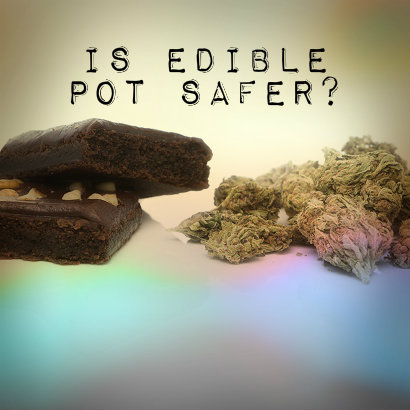 Marijuana is a drug that comes from the cannabis plant. Several parts of the plant, but especially the buds, are dried and then smoked. This is what you would typically think of when you think about marijuana use: someone smoking a joint.
Marijuana is a drug that comes from the cannabis plant. Several parts of the plant, but especially the buds, are dried and then smoked. This is what you would typically think of when you think about marijuana use: someone smoking a joint.
Smoking isn’t the only way to get high on the cannabis plant, though. The psychoactive compounds in the plant can be extracted and added to any number of foods. In fact, Colorado reports that 45 percent of legal pot sales in the state are edible products. Common foods with pot infusions include brownies, cookies, other baked goods, and candies.
Is Edible Pot Safer?
It might seem like eating cannabis-infused products would be safer than smoking a joint. Smoking is bad for your health, after all. For those inexperienced with using different types of pot products it can be difficult to understand the differences between pot edibles and smoking, but they are important. Several of these differences can make edible products more dangerous than smoking a joint.
The first difference is that the psychoactive compounds (the main one is called THC) are absorbed differently. To make you high the THC has to get into your brain. When you eat THC it goes to your liver first and is converted into a product that produces a more intense high. Inhaled THC just goes straight to the brain. If you smoke a joint you will get high sooner, but it will be less intense and last for a shorter duration. Because it takes longer for the high to begin, rookies at eating pot have made the mistake of eating too much. Famously, columnist Maureen Dowd made this mistake and spent eight hours hallucinating in her hotel room in Colorado.
Accidental Edible Marijuana Overdoses
Another difference is that dosing is much trickier with edibles. Some strains of cannabis have more THC than others, but for the most part smoking one joint is much like smoking any other. The concentrations of THC don’t vary too much. With edibles, the manufacturer can add a lot or a little concentrated THC extract. If the product isn’t labeled clearly, or at all, a user could make a terrible mistake and eat too much. Accidental edible overdoses have been devastating. Children have gotten their hands on these products and ended up in the emergency room, and even adults have had problems with them, resulting in two recent deaths.
Legal Recreational Marijuana And Edible Marijuana Regulations
As legal recreational marijuana becomes more common across the country, it is important for consumers, citizens and voters to be aware of the issues. One issue is edible marijuana products. Colorado officials are currently hashing out ways to regulate or even ban them to prevent accidents. The best way to avoid making dangerous mistakes with pot edibles is to avoid them altogether. No version of marijuana is safe. It is a mind-altering drug, and it can cause any number of health problems. Whether it is legal or not, marijuana is a drug.


